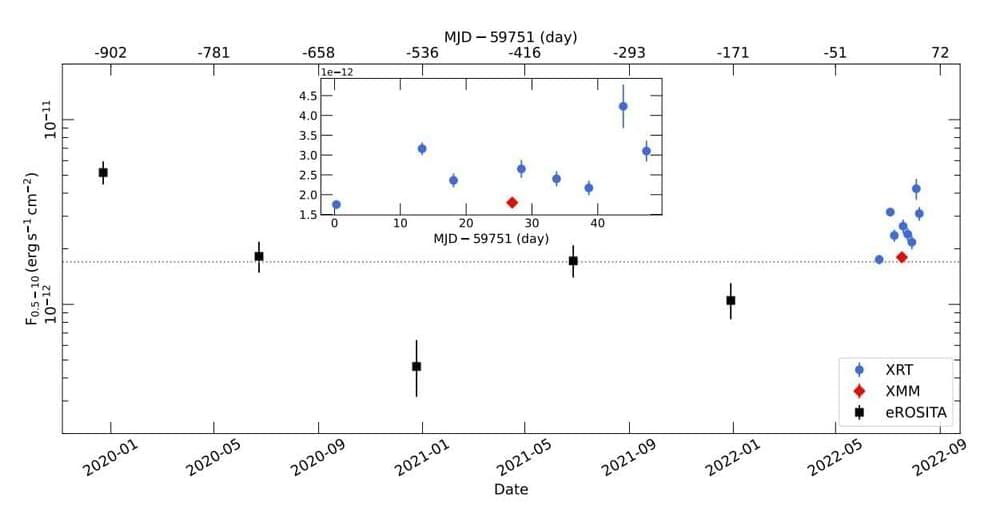Using various space telescopes, an international team of astronomers have observed a recently detected luminous quasar known as SMSS J114447.77–430859.3, or J1144 for short. Results of the observational campaign, available in the July 2023 edition of Monthly Notices of the Royal Astronomical Society, shed more light on the properties of this source.
Quasars, or quasi-stellar objects (QSOs) are active galactic nuclei (AGN) of very high luminosity, emitting electromagnetic radiation observable in radio, infrared, visible, ultraviolet and X-ray wavelengths. They are among the brightest and most distant objects in the known universe, and serve as fundamental tools for numerous studies in astrophysics as well as cosmology. For instance, quasars have been used to investigate the large-scale structure of the universe and the era of reionization. They also improved our understanding of the dynamics of supermassive black holes and the intergalactic medium.
J1144 was detected in June 2022 at a redshift of 0.83. It has a bolometric luminosity of about 470 quattuordecillion erg/s, which makes it the most luminous quasar over the last 9 billion years of cosmic history. It is also the optically brightest (unbeamed) quasar at a redshift greater than 0.4.
